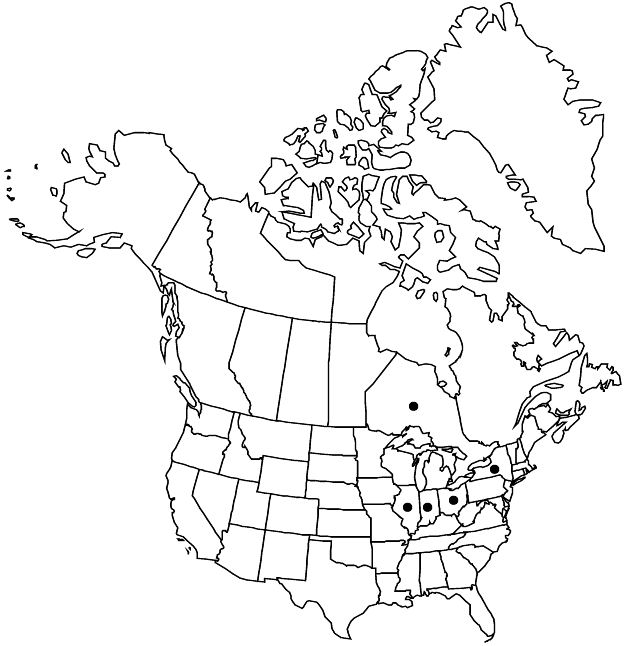Crataegus ×lucorum
Bot. Gaz. 31: 227. 1901. as species
Shrubs or trees, 50–70 dm. Stems: twigs: new growth slightly villous, 1-year old brown, older dark gray-brown; thorns on twigs ± straight to ± recurved, 2-years old bright red-brown, slender to moderately stout, 4–5 cm. Leaves deciduous; petiole very slender, length 50–60% blade, glandular; blade ovate to obovate, 4–5 cm, thin, base rounded to broadly cuneate, lobes 3 or 4 per side, sinuses shallow to moderately deep, lobe apex acute, margins serrate, venation craspedodromous, veins 4 or 5 per side, apex acute, surfaces glabrous. Inflorescences 5–10-flowered; branches sparsely villous; bracteoles caducous, ± linear, membranous, margins glandular-serrate. Flowers 18 mm diam.; hypanthium glabrous; sepal margins glandular-serrate; stamens 20, anthers purple; styles 4 or 5. Pomes red, ± obovoid, 12–16 mm; flesh succulent; pyrenes dorsally grooved, sides plane.
Phenology: Flowering May; fruiting Sep–Oct.
Habitat: Brush, borders of woods, stream banks
Elevation: 200–300 m
Distribution

Ont., Ill., Ind., N.Y., Ohio.
Discussion
Crataegus ×lucorum is scattered from Illinois to New York, exhibiting a mixture of characteristics of ser. Coccineae and ser. Tenuifoliae.
Selected References
None.